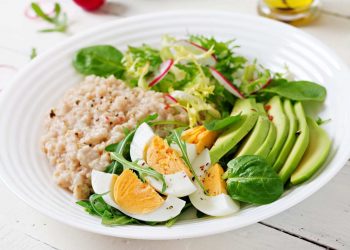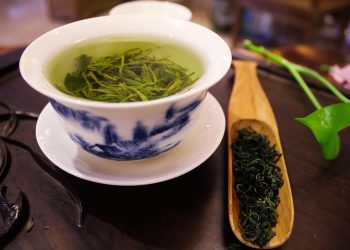7 Bones Healing Fruits To Speed Bone Recovery
Bones healing fruits are nature’s simple, delicious allies when your body needs to mend. They’re fruits rich in vitamins, minerals, and bioactive compounds that support bone remodeling, reduce inflammation, and help your body lay down new bone faster. If you’re recovering from a fracture, dealing with osteoporosis, or simply want your skeleton to stay strong, these fruits deserve a starring role on your plate.
Why this matters: your bones are living tissue that respond to what you eat. Choosing the right fruits can cut recovery time, ease pain, and help you get back to the life you love. That’s not hype — it’s biology.
Contents
- Bones Healing Fruits: The 7 To Speed Recovery
- 1. Citrus Fruits — Oranges, Grapefruit, and Clementines
- 2. Kiwi — Small Fruit, Big Vitamin C Punch
- 3. Berries — Blueberries, Strawberries, and Raspberries
- 4. Pomegranate — A Rich Source Of Antioxidants
- 5. Figs — Potassium And Magnesium In A Sweet Package
- 6. Prunes — The Evidence-Backed Bone Friend
- 7. Guava — Vitamin C Plus Magnesium
- Practical Recipes And Swaps
- What The Experts Say
- Bottom Line
- FAQ
Bones Healing Fruits: The 7 To Speed Recovery
This list is practical, evidence-informed, and taste-driven. I picked fruits that deliver real bone-building nutrients: vitamin C, potassium, magnesium, vitamin K, boron, and polyphenols that protect bone cells. You’ll get guidance on portions, pairing, and quick recipes so you aren’t left wandering the produce aisle.
1. Citrus Fruits — Oranges, Grapefruit, and Clementines
Citrus fruits pack vitamin C, which your body needs to make collagen — the scaffolding for new bone. Collagen gives bone tensile strength; without it, calcium has nowhere to hold. A review from nutrition researchers shows vitamin C intake is linked to better bone mineral density, and Harvard Health highlights vitamin C’s role in connective tissue health.
Eat one orange or a cup of grapefruit segments daily. Juice is convenient, but whole fruit gives fiber, which helps regulate blood sugar and supports a steady healing process. Try orange slices with a sprinkle of toasted almonds for added magnesium.
2. Kiwi — Small Fruit, Big Vitamin C Punch
Kiwi rivals citrus in vitamin C and comes with potassium and vitamin K — both important for bone health. Vitamin K helps with bone mineralization by activating osteocalcin, a protein that binds calcium into the bone matrix. Clinical studies link higher vitamin K intake to stronger bones and reduced fracture risk.
Slice a kiwi into your morning yogurt or blend one into a green smoothie. Pair kiwi with leafy greens and a source of healthy fat, like avocado, to help your body absorb fat-soluble nutrients.
3. Berries — Blueberries, Strawberries, and Raspberries
Berries are among the bones healing fruits that bring polyphenols — antioxidant compounds that calm inflammation and protect bone cells from oxidative stress. Research in nutrition journals suggests diets high in berries support bone density in older adults. Strawberries also offer a healthy dose of vitamin C and manganese.
A cup of mixed berries daily, fresh or frozen, is a simple habit. Add them to oatmeal or toss them over a salad with walnuts for a bone-friendly crunch.
4. Pomegranate — A Rich Source Of Antioxidants
Pomegranate is a lesser-known bones healing fruit that delivers punicalagins and other polyphenols shown to support bone formation in animal studies. While human research is emerging, inflammation reduction is a proven way to support bone healing — and pomegranate juice scores high on that front.
Sip a small glass (4–6 ounces) of pomegranate juice with a meal, or sprinkle arils over roasted root vegetables to get antioxidants alongside vitamin C and potassium.
5. Figs — Potassium And Magnesium In A Sweet Package
Figs provide potassium and magnesium, two minerals that help maintain bone density. Potassium helps neutralize acid load that otherwise leaches calcium from bone. Population studies consistently find diets higher in potassium correlate with better bone health.
Enjoy fresh figs when they’re in season, or keep dried figs for snacking. Pair them with plain yogurt for a potassium- and calcium-friendly dessert.
6. Prunes — The Evidence-Backed Bone Friend
Prunes are among the most researched bones healing fruits. Multiple clinical trials show prunes can slow bone loss and even help increase bone mineral density in postmenopausal women. They offer potassium, magnesium, vitamin K, and unique phenolic compounds that seem to slow bone resorption.
A small handful (about 5–6 prunes) daily is enough to be helpful. Blend them into smoothies or stews — they sweeten naturally and keep you full while supporting recovery.
7. Guava — Vitamin C Plus Magnesium
Guava brings superstar levels of vitamin C and respectable magnesium, a mineral important for bone structure. It’s a tropical pick that supports collagen synthesis and contributes to the mineral balance bones need for repair. Though less celebrated in mainstream bone-talk, guava is a quietly potent bones healing fruit.
Slice guava into salads, make a salsa with lime and cilantro, or blend it into a cooling sorbet to keep healing delicious.
How To Use These Fruits For Faster Recovery
Make these bones healing fruits part of meals, not just snacks. Consistency beats extremes.
- Aim for two to three servings of bones healing fruits daily, mixing citrus or kiwi with berries and a prune or two.
- Combine fruit with a calcium and protein source: Greek yogurt, cottage cheese, or a handful of almonds. Protein gives bone-building raw material.
- Pair fruits with foods containing healthy fats — olive oil, avocado, or nut butter — to improve absorption of fat-soluble nutrients and support overall healing.
- Keep it varied. Different fruits provide different bone-building cofactors. Variety is not just lovely; it’s strategic.
Pairing And Timing Tips
Eat fruits with meals rather than alone as sweets. When you consume bones healing fruits with protein and calcium, your body gets what it needs for bone repair in one efficient sitting.
If you’re on blood thinners, talk to your clinician before dramatically increasing foods high in vitamin K like kiwi or figs. Your doctor will help you balance medication and nutrition safely.
Practical Recipes And Swaps
Here are quick, bone-forward ideas that fit into busy lives:
- Morning smoothie: frozen berries, one prune, one kiwi, Greek yogurt, and a splash of milk or fortified plant milk.
- Citrus-glazed salmon: orange segments, olive oil, and rosemary over baked salmon for a calcium- and vitamin-D-friendly dinner.
- Fig and nut yogurt bowl: chopped figs, walnuts, and a drizzle of honey over plain yogurt makes a bone-sustaining snack.
What The Experts Say
Nutrition scientists and bone specialists recommend improving diet quality as a pillar of bone health. The National Institutes of Health and the Mayo Clinic emphasize calcium, vitamin D, protein, and a diet rich in fruits and vegetables for strong bones. Epidemiological research links higher fruit intake with better bone mineral density and fewer fractures. Those are not empty claims — they’re the consensus of clinicians and researchers who study bones.
You’ll find practical guidance and clinical resources at government and medical sites like the NIH’s Bone Health pages and Harvard’s nutrition insights.
Bottom Line
Make bones healing fruits a daily habit. They give vitamin C for collagen, minerals like potassium and magnesium for mineral balance, and polyphenols that protect bone cells. Combine them with protein, calcium, and vitamin D, and you’ve created a healing environment your body can’t help but use. Small changes — a prune here, a handful of berries there — add up. Eat well, sleep, move gently, and let your bones do what they were built to do: heal.
You can start today. Pick two fruits from this list, plan three servings across meals, and notice how recovery feels different when nutrition is on your side.
FAQ
Can fruits alone heal broken bones?
Fruits are supportive, not solitary healers. Bones healing fruits supply nutrients that speed repair, but your body also needs calcium, vitamin D, adequate protein, and proper medical care. Use fruit as part of a coordinated recovery plan.
How much fruit should I eat for bone healing?
Aim for two to three servings per day of bone-supportive fruits, mixing citrus, berries, and a prune or two. Balance with protein and calcium at meals for the best results.
Are dried fruits as effective as fresh fruits?
Dried fruits keep nutrients concentrated, so small portions go a long way. Prunes and dried figs are especially convenient. Watch portions — dried fruit is higher in sugar by weight.
Do I need supplements if I eat these fruits?
That depends on your blood levels and diet. Many people need supplemental vitamin D or calcium based on lab results or clinical diagnosis. Discuss supplements with your doctor to ensure safety and efficacy.
Can I get these fruits if I live in a cold climate?
Yes. Frozen and canned (in water or own juice) options retain nutrients well. Frozen berries, canned citrus segments, and dried figs or prunes are excellent year-round choices.
— — —
References
The National Institutes of Health provides comprehensive bone health resources and guidance at the NIH Osteoporosis and Related Bone Diseases National Resource Center (http://www.bones.nih.gov/).
A clinical trial and review on prunes and bone health are available via the National Center for Biotechnology Information, demonstrating prunes’ benefits for bone density (http://www.ncbi.nlm.nih.gov/pmc/articles/PMC4527009/).
Harvard Health Publishing discusses the role of vitamin C and other nutrients in tissue and bone health, offering practical diet advice (http://www.health.harvard.edu/newsletter_article/vitamin-c-and-health).
The Mayo Clinic outlines nutrition and lifestyle strategies for bone health, emphasizing calcium, vitamin D, and diet quality (http://www.mayoclinic.org/diseases-conditions/osteoporosis/in-depth/bone-health/art-20045060).
Get Your FREE Natural Health Guide!
Subscribe now and receive our exclusive ebook packed with natural health tips, practical wellness advice, and easy lifestyle changes — delivered straight to your inbox.














